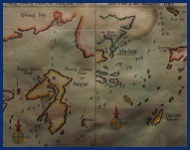Project Responsible: Dr. Manuel Perez Garcia (Renmin University of China), from 2013 to 2014
Project funded by UKNA (Urban Knowledge Network Asia)-Marie Curie Actions of the European Union
When dealing with comparative and cross-cultural studies on Europe and Asia, scholar works have exceeded of ambiguities and vagueness when talking about geographical units as well as chronology. It is not always clear whether scholars talk about Europe, Western Europe, Britain,on one side, and on the other side, Asia, China or Yangzi region when analysing and comparing the economic growth and paths of development during late eighteenth-century. Conclusions are, therefore, vague and results weak. In addition, there has been much research based on theoretical framework on what is Global History, how to apply it, as well as theory on assuming a priori deep contrast or ‘greater’ divergences between Asian territories and Western territories, rather than to take such theoretical framework and apply it to a particular case study in order to see with empirical data what is the real framework of such divergence, if in deep we should talk on divergence. What I advocate is for comparing specific geographical units in concrete demarcated periods, such as port cities, defined as strategic geo-political sites to develop commerce, relations and networks between China and Europe which can narrow better the gap that some scholars have taken when widely analysing differences between Asia and Europe without a specific geographical and chronological delineation. Macau, in southChina, and Marseille in Mediterranean Europe are the areas chosen to undertake our study.
Both places are defined as trans-national and trans-cultural sites due to the international mercantile communities settled in such areas. Macau and Marseille are also geo-strategical sites in the South China Sea and Mediterranean Sea, respectively, as their privileged location allowed them to trace trade links with other surrounding ports and external areas for the distribution of commodities. Marseille was the trans-national entrepôt that connected Europe with Asia through the Levantine routes,whereas Macau was connected with the West via the Indian routes and also through the Manila-Acapulco galleon. Therefore, the common feature shared in both areas is the cross-cultural trade that stimulated local economies, the internal organization of trading families, the assimilation to different cultures, and of course, the concepts of trust, loyalty and mediation, inherent to these heterogeneous groups, which strengthened their networks. The analysis of patterns of consumption, possible differences and similarities, can give us a good view on the transmission on cultural values by these trans-national communities. The analysis of consumption of Chinese goods in Europe and Western goods in China is one of the main features of this project in order to observe the assimilation process between people of both cultures. And of course the main mediators in such process of socio-cultural transfers through consumption of new or long-distance goods are the merchants defined as ‘vicarious’ consumers who stimulated new cultural practices, forms and habits in the territory they settle.

